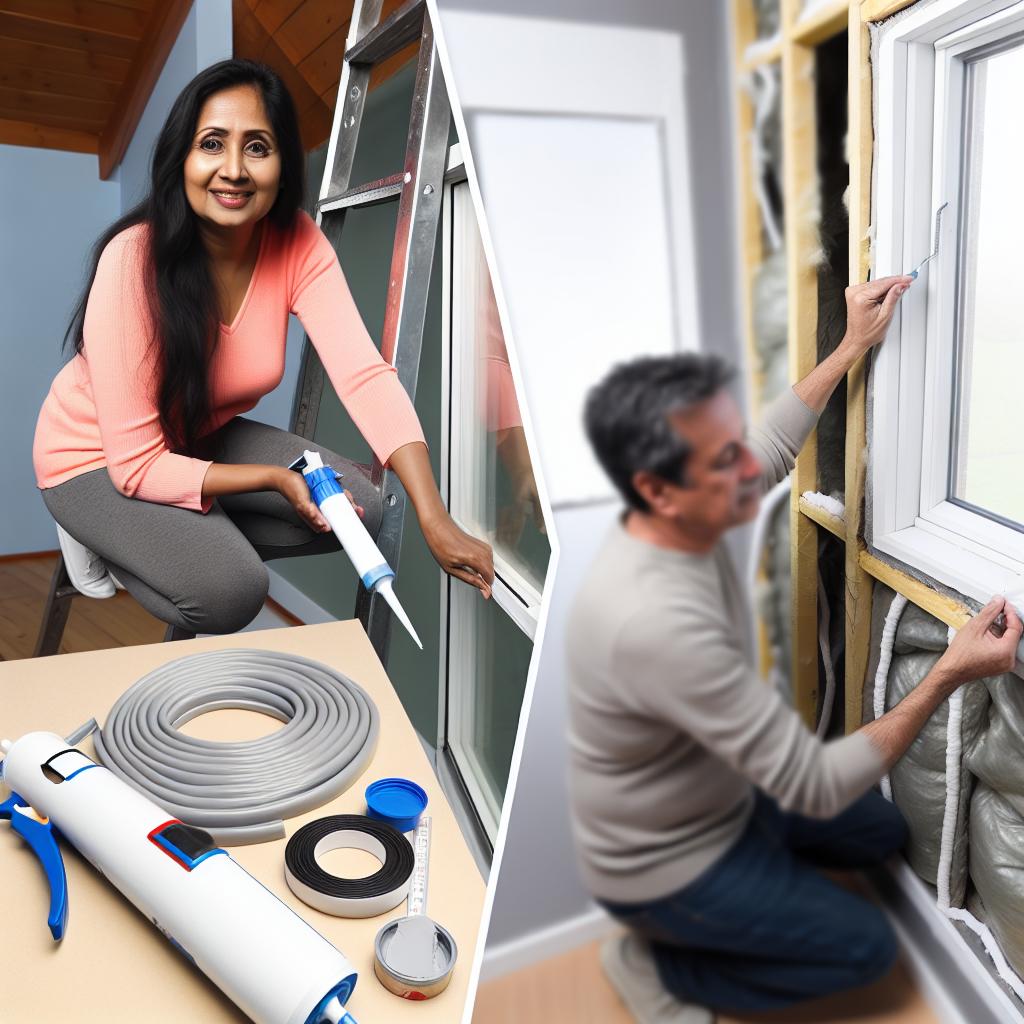Understanding Air Leaks
Air leaks in your home are a prevalent issue that can significantly impact both energy efficiency and indoor comfort. They occur when outdoor air enters and conditioned air escapes through various openings and cracks in the structure of your home. Over time, even small gaps around windows, doors, and other unintended openings can lead to considerable energy loss and compromise the overall effectiveness of your heating and cooling systems.
The Nature of Air Leaks
Understanding air leaks involves recognizing how they happen and what causes them. As homes settle and materials expand and contract with changing temperatures, small openings can form. These gaps allow for the transfer of air, disrupting temperature regulation and inflating energy costs. Additionally, poor installation of construction materials and fixtures can exacerbate this problem. Discovering ways to detect and prevent these leaks is crucial in maintaining an energy-efficient and comfortable home environment.
Common Areas of Air Leaks
Although air leaks can occur in various parts of a home, several areas are often more susceptible:
Windows and Doors
Spaces around window frames and the gaps beneath doors are typical culprits. These areas frequently allow drafts to enter the home, which can significantly undermine efforts to heat or cool indoor spaces efficiently. Regular inspections and appropriate insulation measures can help alleviate this issue.
Attic Spaces
Unsealed cracks in attic areas and around hatchways are also common sources of air leaks. Since heat rises, these leaks result in direct heat loss during colder months. Ensuring that attic spaces are well-sealed will help to maintain temperature consistency and reduce energy waste.
Electrical Outlets and Switch Plates
Often overlooked, small gaps around electrical outlets and switch plates are additional places where unconditioned air can seep into the home. Given their prevalence, particularly in older homes, addressing these leaks is essential in maintaining a stable indoor environment.
The Impact of Ignoring Air Leaks
Choosing to neglect air leaks in your home can lead to several adverse effects. The most immediate consequence is a substantial increase in energy costs. Heating and cooling systems are forced to operate longer and harder to achieve and maintain desired temperatures, which increases utility expenses. According to the U.S. Department of Energy, air leaks can account for up to 30% of a home’s heating and cooling costs, illustrating the financial impact of unaddressed air leakage.
In addition to the economic burden, air leaks contribute to uneven temperatures within the living space, leading to certain areas that feel drafty or excessively warm. These inconsistencies can diminish the overall comfort of residents and create an uneven distribution of conditioned air, rendering some rooms uncomfortable to occupy.
Steps to Seal Air Leaks Effectively
Sealing air leaks is an essential and practical step toward improving energy efficiency in a home. Homeowners can perform a simple test by holding a lit incense stick or a thin piece of tissue paper around potential leak areas; if the smoke or paper wavers, it indicates a leak that needs attention. Addressing such leaks can lead to substantial savings on energy bills and can greatly improve the comfort and energy performance of a home.
Caulking
Caulking represents an effective solution for sealing cracks and gaps between stationary building components, such as around window and door frames. This pliable material can be applied with a caulking gun and smoothened for an airtight seal that prevents air leakage.
Weatherstripping
Weatherstripping works best on movable components, such as doors and operable windows. This method involves using strips of material that compresses to block airflow, ensuring that windows and doors close tightly. With regular maintenance, weatherstripping remains an effective barrier against air leaks, sustaining the energy efficiency of a home.
Additional Benefits of Sealing Air Leaks
Beyond reducing energy costs and enhancing comfort, sealing air leaks provides numerous other advantages, including improved indoor air quality. By preventing the infiltration of outdoor air, homeowners can significantly reduce the entry of pollutants and allergens that impact health and well-being. A well-sealed home creates a healthier living environment by substantially minimizing the potential for mold growth and mitigating respiratory irritants.
Additionally, effective sealing protects the structural elements of a home from moisture-related damage. Air leaks can introduce excessive moisture into the home, leading to potential mold growth and deterioration of building materials. By keeping moisture at bay, you protect your property’s structural integrity, thereby extending its lifespan and maintaining its value.
Conclusion
In conclusion, addressing air leaks is a cost-effective method for enhancing a home’s energy efficiency, comfort, and air quality. Regular inspection and proactive sealing of potential leaks is an investment in your home’s performance and longevity. By dedicating time to inspect these areas and applying solutions like caulking and weatherstripping, homeowners can realize both immediate and long-term benefits. Encouraging regular maintenance and inspection will ensure that homes remain efficient, comfortable spaces that are economical to heat and cool. A well-sealed home not only provides significant economic advantages but also delivers a healthier and more comfortable living environment for its occupants.



